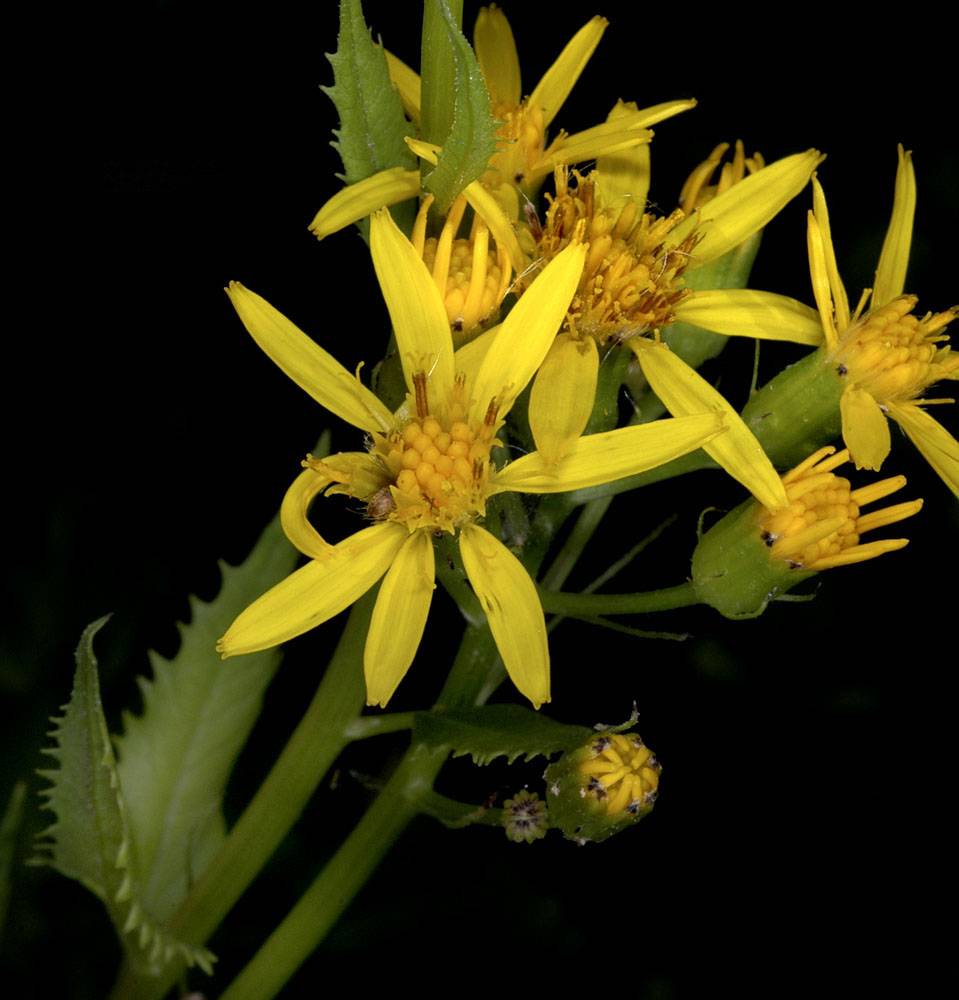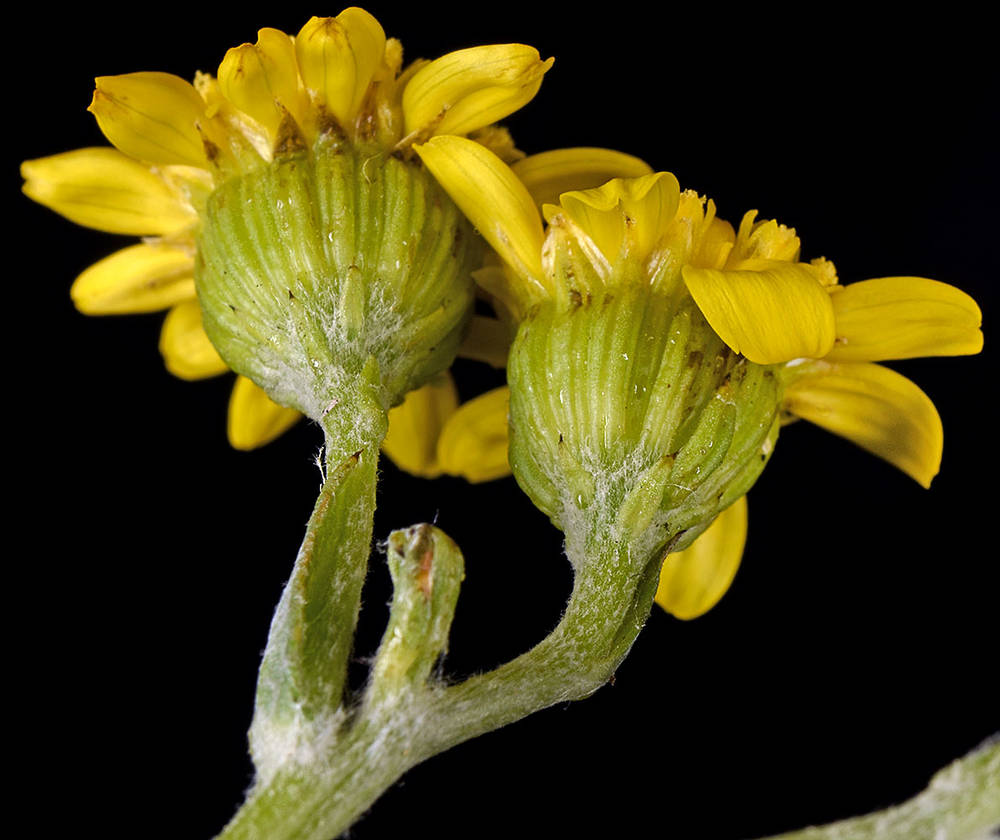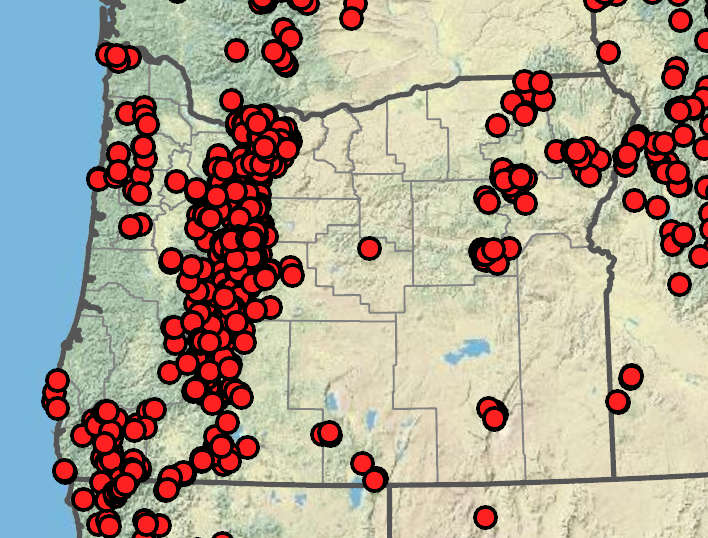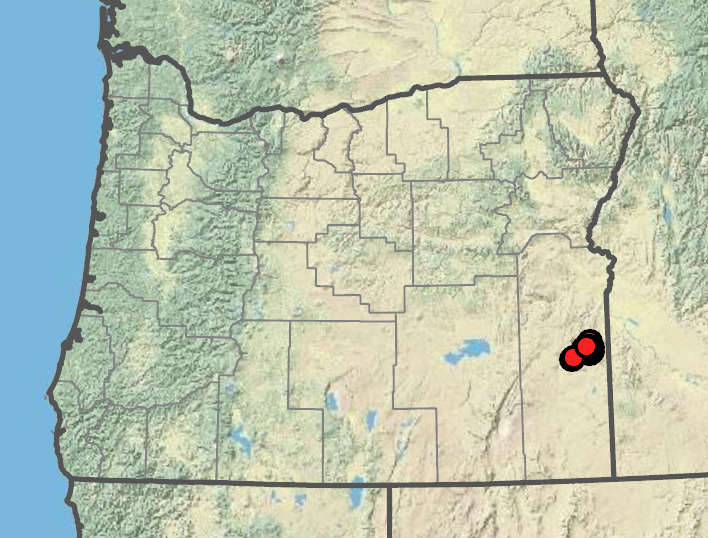Senecio triangularis
Senecio ertterae
arrowleaf groundsel
Ertter's groundsel
1 or 2–4 and loosely clustered, glabrous or sparsely pubescent.
usually 1, rarely clustered, subsucculent, unevenly tomentose to glabrate.
basal present at flowering;
cauline ± evenly distributed along stems, gradually reduced distally, narrowly to widely triangular, bases tapered to truncate or cordate;
margins dentate, rarely subentire;
surfaces sparsely tomentose to nearly glabrous;
proximal petiolate;
distal sessile.
basal withering early;
cauline oblanceolate to spatulate, bases tapering;
margins deeply incised;
petioles winged;
distal sessile and bract-like, progressively reduced.
corymb- or ± raceme-like arrays;
bracts conspicuous.
cyme-like arrays;
bracts 0 or few and inconspicuous.
cylindric to narrowly campanulate.
widely cylindric.
~8;
rays 9–15 mm.
8, rarely 13;
rays 5–6 mm.
35–45.
45–55.
(8)13(21), 6–10 mm;
tips green, rarely black.
usually 13, 6–7 mm;
tips green;
surfaces densely floccose-tomentose.
2–6 bractlets, inconspicuous, rarely > 2 mm.
1–5+ linear bractlets; to 2 mm.
2.5–3.5 mm, glabrous.
2–3 mm, usually hairy along the ribs, sometimes glabrous.
10–30(60).
6–10(20).
=40, 80.
=40.
Senecio triangularis
Senecio ertterae
Open areas, rocky streambanks, wet meadows, bogs, damp places in coniferous forests. Flowering May–Sep. 0–2800 m. BR, BW, Casc, CR, ECas, Est, Lava, Sisk, WV. CA, ID, NV, WA; north to AK, northeast to MT, east to WY, southeast to NM. Native.
Some plants with narrow, subentire leaves that taper to the petioles have been found in acidic bogs in Washington and Oregon. A few authors recognize these as variety angustifolia. However, this author has observed several specimens (specifically indicated as being collected in bogs) that had both narrower leaves and the wider leaves more typical of variety triangularis on the same plant.
Talus slopes, volcanic tuff. Flowering May–Sep. 800–1400 m. Owy. Native. Endemic to Oregon.
This species was not recognized until the late 1970s. It is a very rare endemic found only in Malheur County. It has been added to the Center for Plant Conservation’s National Collection of Endangered Plants.
Debra Trock
Debra Trock
- Local floras:
BC,
CA,
OR,
WA
- Local Web sites:
CalFlora,
CalPhotos,
Flora NW,
PNW Herbaria,
Turner Photog.
WildflowerSearch
iNaturalist (observations)
USDA Plants Database
- LBJ Wildflower Center
- SEINet
- Plants of the World Online
- Encyclopedia of Life
- Wikipedia
- Google Image Search





